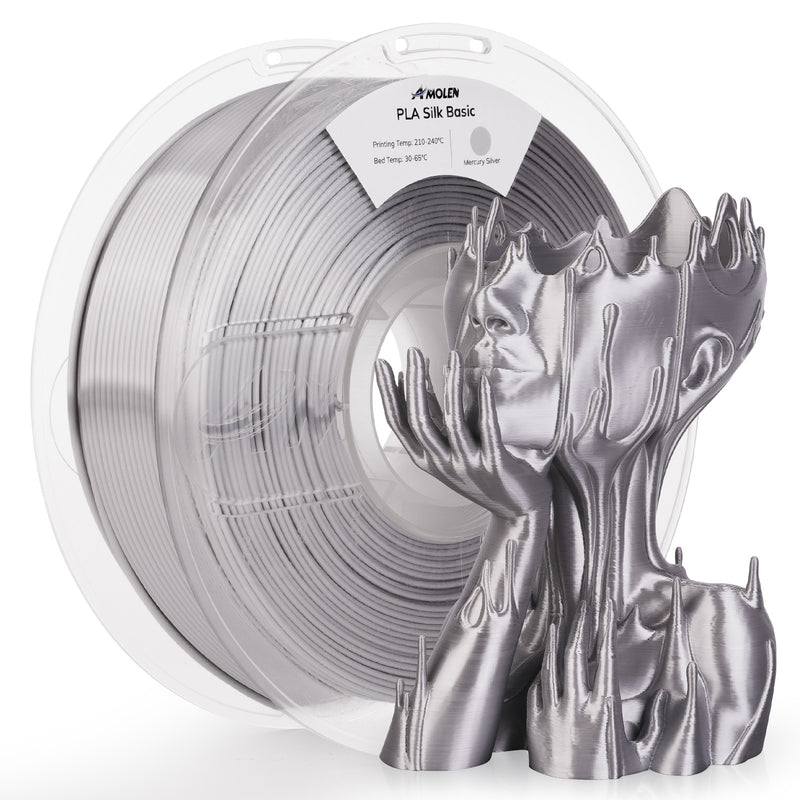Unleash Your Creativity: Discover the Magic of 1.75mm PLA Filament!
In the world of 3D printing, the materials we choose play a pivotal role in transforming our ideas into reality. Among the various options available, 1.75mm PLA filament stands out as a favorite for both beginners and seasoned enthusiasts alike. Made from polylactic acid, a biodegradable thermoplastic derived from renewable resources, PLA filament offers a unique combination of ease of use and versatility. This article will explore the specifications and uses of 1.75mm PLA filament, highlighting its significance in enabling creativity across diverse projects. Whether you're crafting prototypes, educational models, or artistic sculptures, understanding this filament's properties can enhance your 3D printing experience.

Understanding 1.75mm PLA Filament
1.75mm PLA filament is a popular choice for 3D printing due to its ideal diameter, which allows for smooth extrusion and consistent flow through the nozzle. Composed primarily of polylactic acid, this filament is derived from natural resources such as cornstarch or sugarcane, making it one of the more eco-friendly options available on the market. Its popularity is not just limited to its environmental benefits; 1.75mm PLA filament provides excellent print quality, detail, and an appealing finish, making it suitable for a wide range of applications. Compared to other filament sizes, such as 2.85mm or 3mm, 1.75mm filament is favored for its compatibility with a broader variety of 3D printers, offering both ease of use and reliability.
Specifications of 1.75mm PLA Filament
The technical specifications of 1.75mm PLA filament are critical for achieving optimal printing results. The filament typically has a diameter tolerance of ±0.05mm, allowing for precise feeding into the printer. The melting point of PLA is around 180-220°C, and it generally prints well at temperatures between 190-210°C, depending on the specific printer and settings used. This lower printing temperature compared to other materials like ABS makes PLA filament easier to work with, as it reduces the risk of warping and curling. Additionally, the cooling characteristics of PLA allow for fine detail and intricate designs, making it a favorite among artists and designers.
Uses of 1.75mm PLA Filament
1.75mm PLA filament is incredibly versatile and can be used for various applications. Many hobbyists utilize it for creating prototypes, allowing them to test ideas quickly and cost-effectively. In educational settings, teachers and students use PLA filament to produce models that illustrate scientific concepts, engineering principles, and artistic designs. Additionally, the filament is often employed in artistic creations, where its ability to hold fine details and vibrant colors can bring imagination to life. Friends of mine who are passionate about 3D printing have used PLA to make everything from decorative items to functional tools, showcasing the filament's adaptability in both personal and professional projects.
Advantages of Using 1.75mm PLA Filament
The benefits of using 1.75mm PLA filament are numerous. First, its ease of use makes it an excellent choice for beginners; it adheres well to the print bed, minimizing the chances of failed prints. Second, PLA is known for being eco-friendly, as it is made from renewable resources and is biodegradable under the right conditions. This feature appeals to environmentally conscious creators who wish to reduce their ecological footprint. Additionally, PLA filament is available in a wide variety of colors and finishes, including matte, glossy, and even translucent options. Compared to other filament types, such as ABS or nylon, PLA is less prone to warping, which further enhances its usability.
Tips for Working with 1.75mm PLA Filament
To achieve the best results with 1.75mm PLA filament, keep a few essential factors in mind. First, the recommended printing temperature range is typically between 190-210°C, with a heated bed ideally set to around 50°C to improve adhesion. If storing PLA filament, use an airtight container to prevent moisture absorption, which can lead to printing defects. When starting, don’t be afraid to experiment with different print settings, speeds, and finishes to find what works best for your projects.
Maximizing Your 3D Printing Experience with 1.75mm PLA Filament
In summary, understanding the specifications and applications of 1.75mm PLA filament is crucial for anyone looking to enhance their 3D printing experience. Its eco-friendly composition, ease of use, and versatility make it a top choice for various projects, from prototypes to artistic creations. By following the tips outlined in this article, you can unlock the full potential of PLA filament and explore your creative ideas with confidence. So, gather your materials, set up your printer, and embark on your next 3D printing adventure with 1.75mm PLA filament!



